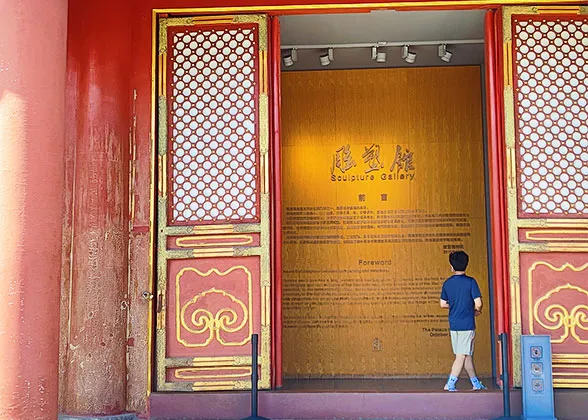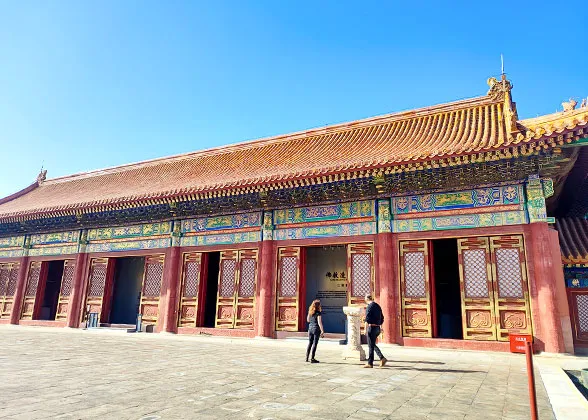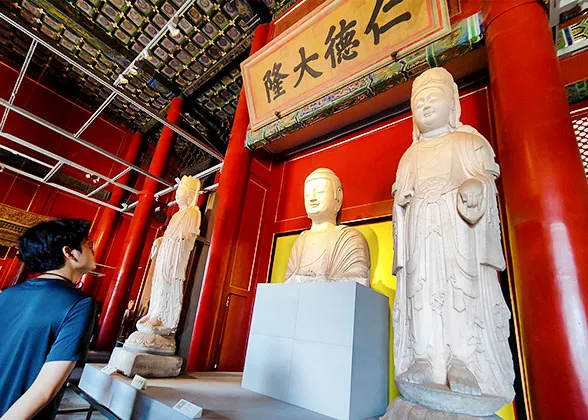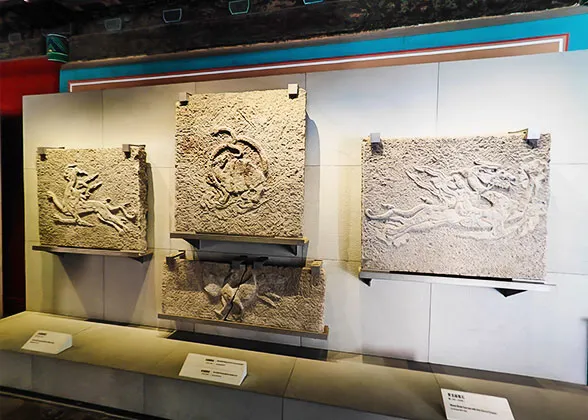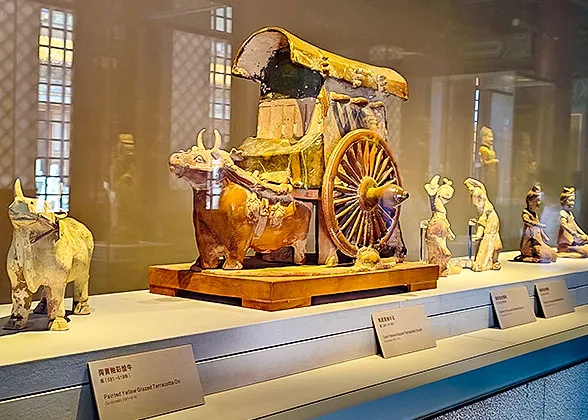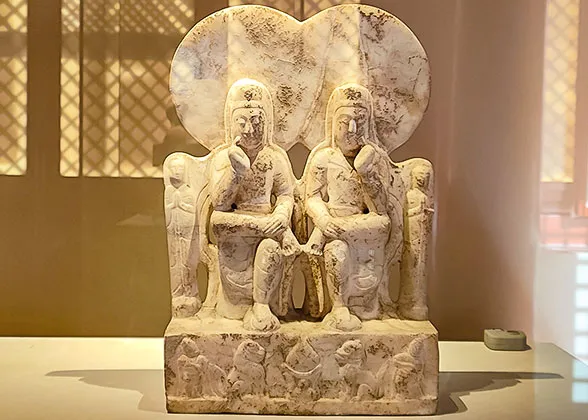Sculpture Gallery, Palace of Compassion and Tranquility (Cininggong)
The Sculpture Gallery, situated in the Palace of Compassion and Tranquility (Cininggong) on the west side of the Forbidden City, presents 425 exhibits showcased across 1,375 square meters (14,800 square feet), including terracotta figures, engraved bricks and stones, and Buddhist statues from the Warring States Period (475~221BC) to the Qing Dynasty (1644~1911AD).
|
|
Layout: 5 Sections of the Sculpture Gallery
Main Hall: Selected Sculpture Hall
The Main Hall of the Palace of Compassion and Tranquility showcases 45 sculptures, which are the finest and most well-preserved ones of the Gallery.
Rear Hall: Buddhist Statue Hall
The Great Buddha Hall (Dafotang) at the rear of the Palace of Compassion and Tranquility consists of two parts categorized by material: the central room showcases 70 Buddhist statues crafted from celadon porcelain, clay, and wood, arranged chronologically from 3rd to early 20th century, while the east room exhibits 74 gold and copper statues.
These statues originate from both China’s mainland Buddhism and Tibetan Buddhism, with the former featuring rounded and benevolent facial expressions and the latter depicting deep-set and fierce eyes.
West Corridor Rooms: Portrait Brick and Stone Hall
|
|
The West Corridor Rooms present the Portrait Brick and Stone Hall, featuring over 60 stone reliefs and painted bricks. These artifacts, with smoothly carved curves, offer a vivid glimpse into ancient Chinese life, including farming, hunting, warfare, feasting, and the imaginative world of immortals.
Southwest Rooms: Han & Tang Terracotta Hall
The Han & Tang Terracotta Hall highlights terracotta figurines from the Han Dynasty to the Ming Dynasty (202 BC – 1368 AD), with a focus on the Han (202 BC - 220 AD) and Tang (618 - 907 AD) periods, known for their peak terracotta artistry and diverse themes.
The Han figurines depict people in daily life, such as cooks, dancers, and farmers, all with genuine smiles reflecting the Han society's prosperity. Tang terracotta figurines, adorned with tri-colored glazing in yellow, green, and white, showcase plump ladies, Central Asian silk merchants, and camels, embodying the Tang Dynasty's inclusiveness.
Southeast Rooms: Xiude White Stone Hall
|
|
The Xiude White Stone Hall is renowned for its pure white marble Buddhist statues, which boast a snow-white texture and delicate luminous quality, creating a sacred ambiance. Unearthed from Xiude Temple ruins in Hebei Province in North China, these statues span from 386 to 907 AD.
Exhibition Highlights
World's Greatest Kiss: Stone Sculpture of an Embracing Couple (Eastern Han Dynasty, 25~220)
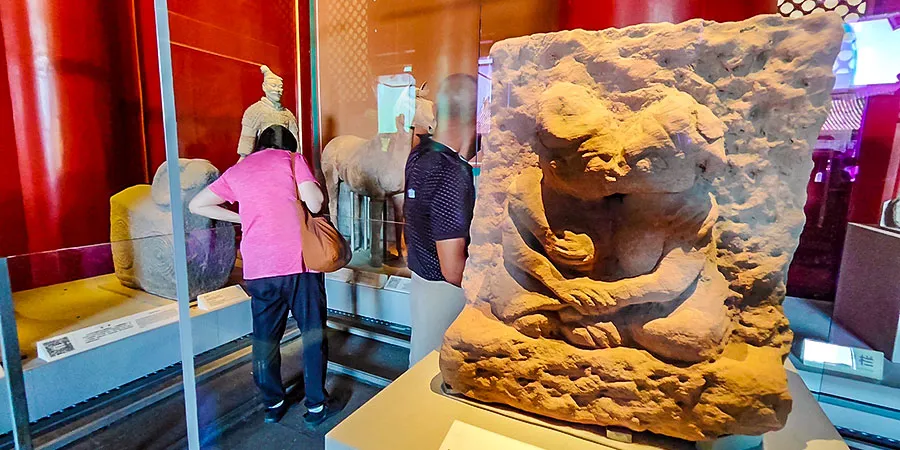 |
| Embracing Couple Sculpture |
This stone sculpture from the Eastern Han Dynasty, titled “The Greatest Kiss in the World”, was discovered in 1941 in a tomb in South China. It portrays a married couple, the tomb owners, in an intimate embrace, with the man wearing a crown and wrapping his arm around the woman, while she places her hand on his shoulder, symbolizing their sweet marital life.
Lively Tri-colored Camel Figurine (Tang Dynasty, 618~970)
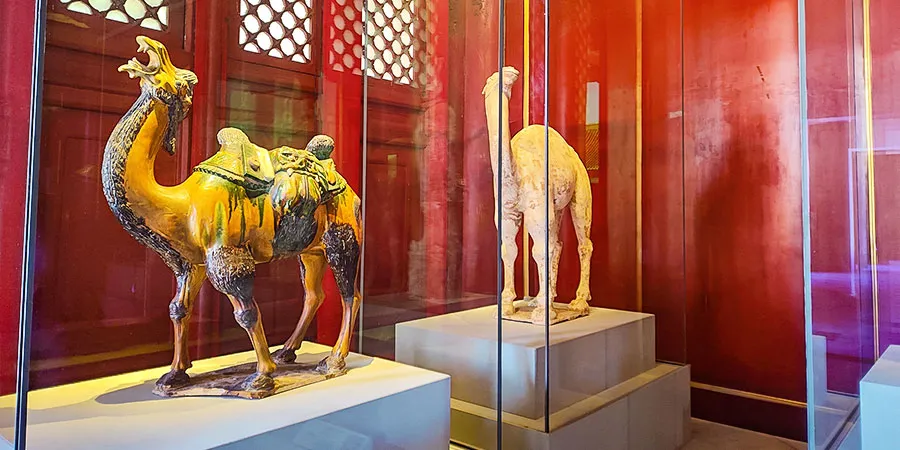 |
| Tri-colored Camel Figurine |
This nearly one-meter-tall (3.28-foot-tall) tri-colored figurine depicts a camel adorned with brown and green glaze. Between its humps hangs a beast-faced pack carrying goods such as silk and ham. With its front legs slightly bent and hind legs straight, the camel appears ready to embark on the Silk Road.
Buddha's Compassion: Gilded Silver Statue of the Sixth Panchen Lama (1781)
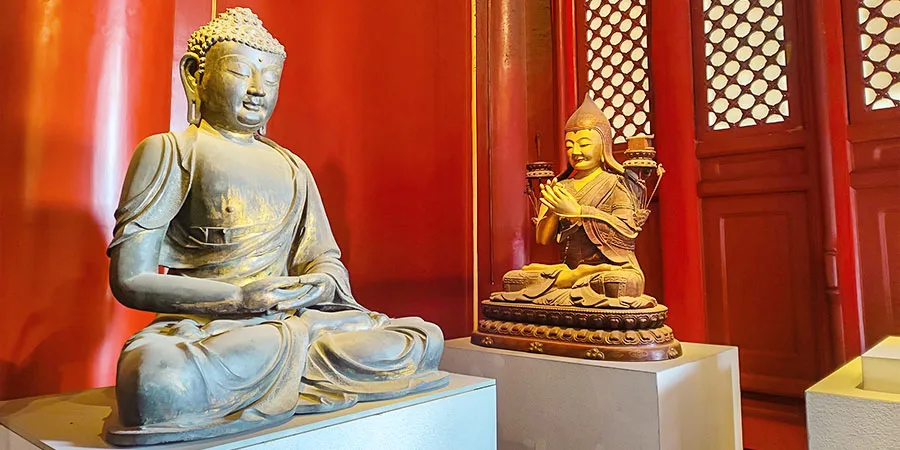 |
| Sixth Panchen Lama Statue (Right) |
This 40-centimeter-tall (15.75-inch-tall) statue commemorates the Sixth Panchen Lama's (leadership of Tibetan Buddhism) 1780 journey from Tibet to Beijing to celebrate Emperor Qianlong's (1711~1799) 70th birthday.
The statue, adorned with a pointed crown and monk's robe, boasts a remarkably lifelike facial expression: the smiling eyes, upturned like joyfully leaping fish, vividly capture the compassionate and joyful demeanor of the Panchen Lama during his journey.
An Era of Chubbies: Terracotta Female Figure (Tang Dynasty, 618~970)
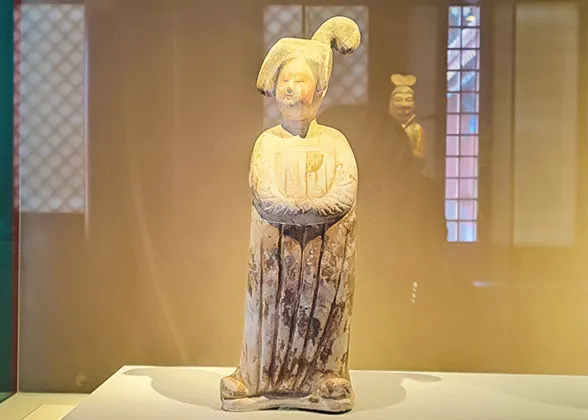 |
| Terracotta Female Figure |
This terracotta beauty has rosy cheeks, thin eyebrows, sparkling eyes, and a cherry-red pout. Dressed in a flowing skirt, she tucks her hands into her sleeves, her belly slightly protruding, as if in a leisurely stroll.
This was the fashion for chubbiness prevalent from 618 to 970, during which Noble Consort Yang (719~756), with her plump figure, was the emperor's favorite, further solidifying this trend.
A Miraculous Filial Story: Wang Xiang Lying on Ice to Catch Carp (North Song Dynasty, 960~1127)
On this rectangular brick, in the bottom right, Wang Xiang lies naked on the ice, trying to catch a fish. The story goes that Wang Xiang's stepmother, Zhu, often spoke ill of him to his father, causing Wang to lose his father's affection. However, Wang remained to show his filial obedience.
On a freezing winter day, when Zhu wanted to eat fresh fish, Wang Xiang undressed and lay on the ice to catch it. His actions moved the deities, causing the ice to melt and two carp to jump out. This is one of the classic stories ancient rulers used to promote filial piety.
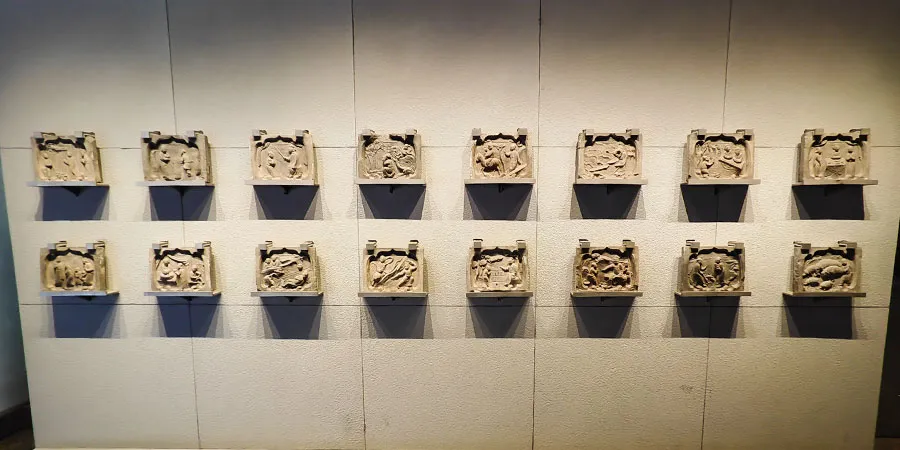 |
| Portrait Bricks in the Gallery |
Head west to see how the late emperor's concubines' life like in the Palace of Longevity and Good Heath (Shoukanggong).
Go south to visit these old ladies' Garden of Compassion and Tranquility.
Go north to explore Western Six Palaces (Xiliugong), where the imperial concubines lived.
Head east to the Qianqingmen Square for the Gate of Heavenly Purity (Qianqingmen).
- Last updated on Oct. 09, 2025 by Jally Zhang -
